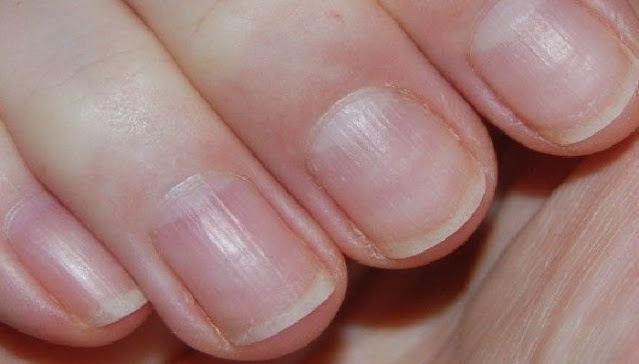- Get link
- X
- Other Apps
Nail ridges are common imperfections that can appear on the surface of the fingernails. These ridges can manifest as vertical or horizontal lines and may vary in severity. While nail ridges are often harmless, they can sometimes indicate underlying health issues or nutritional deficiencies. Understanding the causes, treatment, and prevention of nail ridges is essential for maintaining healthy nails.
Causes of Nail Ridges:
Aging: Vertical ridges are a natural consequence of aging.
As individuals get older, the cell turnover rate in the nails slows down,
leading to the development of ridges.
Nutritional Deficiencies: Inadequate intake of essential
vitamins and minerals, such as biotin, iron, and zinc, can contribute to the
development of nail ridges. Ensuring a well-balanced diet is crucial for
overall nail health.
Dehydration: Lack of proper hydration can affect the health
of your nails. Dehydrated nails are more prone to developing ridges and may
become brittle.
Trauma or Injury: Physical trauma to the nail matrix, such
as slamming a finger in a door or chronic nail biting, can cause ridges to form
as the nail heals.
Medical Conditions: Certain health conditions, such as
psoriasis, eczema, and arthritis, can impact nail health and lead to the
development of ridges.
Medications: Specific medications may have side effects that
affect the nails, causing changes in their texture and appearance, including
the formation of ridges.
Treatment of Nail Ridges:
Nutritional Supplements: Taking supplements like biotin,
which is known to promote nail health, may help reduce nail ridges associated
with nutritional deficiencies. However, it's essential to refer with a
healthcare professional before starting any supplement regimen.
Moisturization: Keeping the nails and surrounding skin
well-moisturized can prevent dehydration and minimize the appearance of ridges.
Using a good-quality moisturizer regularly can be beneficial.
Protective Measures: Avoiding trauma to the nails by using
gloves during activities that may cause damage, such as gardening or cleaning,
can prevent the development of ridges.
Professional Nail Care: Regular manicures, including gentle
filing and buffing, can help improve the appearance of nail ridges. However,
excessive filing should be avoided, as it can weaken the nails.
Addressing Underlying Health Issues: If nail ridges are
associated with an fundamental health condition, it is essential to address and
treat the primary cause. Discussion with a healthcare provider is crucial for
proper diagnosis and management.
Prevention of Nail Ridges:
Balanced Diet: Overwhelming a well-balanced diet rich in
vitamins, minerals, and protein is vital for overall nail health. Foods like
fruits, vegetables, lean proteins, and whole grains contribute to nail strength
and resilience.
Hydration: Drinking an passable amount of water daily helps
maintain the body's overall hydration, benefiting the nails as well. Hydrated
nails are less likely to develop ridges or become brittle.
Gentle Nail Care: Avoiding excessive use of harsh chemicals
and minimizing trauma to the nails through gentle care practices can prevent
the development of ridges.
Regular Moisturization: Applying a moisturizing product to
the nails and cuticles regularly helps prevent dehydration and promotes overall
nail health.
Conclusion
Understanding the causes, treatment, and prevention of nail
ridges is essential for maintaining healthy and attractive nails. While some
ridges are a natural part of aging, others may signal underlying health issues
that require attention. By adopting a proactive approach to nail care and
addressing any nutritional or health concerns, individuals can promote strong,
smooth nails and enhance their overall well-being.
- Get link
- X
- Other Apps

Comments
Post a Comment